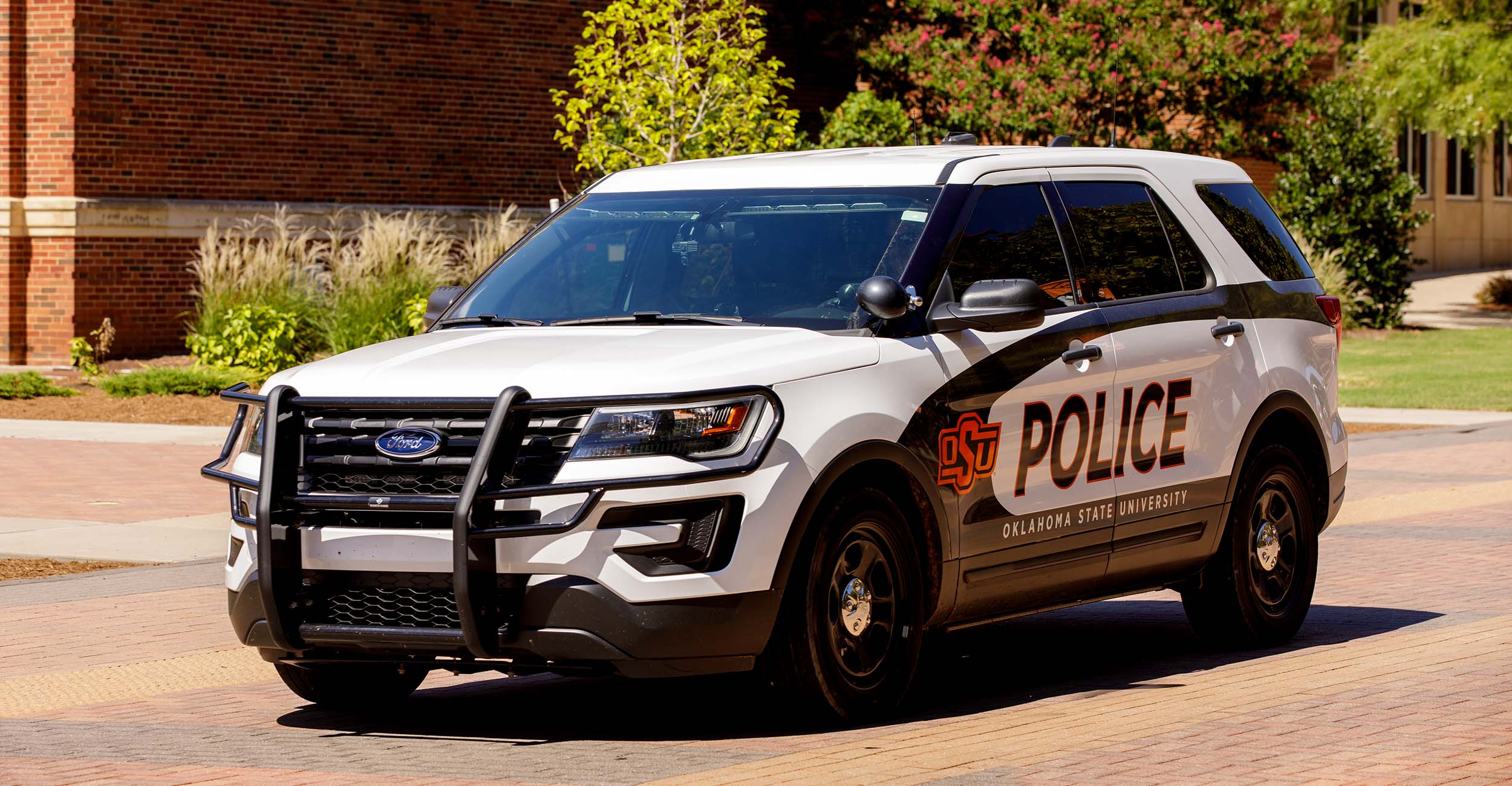
Training simulator gives OSUPD new tool for stressful scenarios
Thursday, November 4, 2021
Media Contact: Shannon Rigsby | Public Information Officer | 405-744-9081 | shannon.rigsby@okstate.edu
Every day a law enforcement officer puts on the uniform, there’s a chance they could be faced with a life-or-death decision. These split-second decisions are difficult to train for unless officers are subjected to high-stress situations that replicate the conditions.
The Oklahoma State University Police Department now has a new tool that can do just that, thanks to the Division of Institutional Diversity, which purchased a training simulator with privately raised funds.
Dr. Jason F. Kirksey, vice president for Institutional Diversity, took part in the OSUPD’s Citizens Academy in 2019, a 20-hour course covering everything from officer training requirements to crime scene evidence preservation. Participants also spent time on the Stillwater Police Department’s training simulator.
The opportunity to step into an officer’s shoes with the simulator truly opened Kirksey’s eyes.
“Participating in the OSUPD Citizens Academy offered a level of insight and awareness about the practice of policing I had never considered,” Kirksey said. “The scenarios presented during my experiences on the simulator truly had a chilling effect on my overall perception of law enforcement, particularly the duties and responsibilities of a police officer. Each time I fired my weapon during a scenario was a blur and uniquely instinctive based on the few hours we spent training earlier in the day.”
Kirskey said the more scenarios he experienced, the more calm and focused he became.
“This was essentially the motivation behind the decision to purchase the simulator for OSUPD,” he said. “The benefit of our officers having the opportunity to regularly use this type of simulator is immeasurable. In a few hours, it helped an ordinary citizen be better equipped, both physically and mentally, to engage in both calm and intense law enforcement situations.”
“The value of this training tool is beyond measure. It will better prepare our officers
and can be used as an educational resource for giving our community members a glimpse
into the types of split-second decision-making our officers are asked to be prepared
for every day.”
OSUPD Capt. Colt Chandler said the simulator will enhance training capabilities and increase the frequency of firearms training without the added burden of ammunition costs. More importantly, it exposes officers to decision making under pressure.
“Exposure is key to understanding how officers need to navigate situations,” Chandler said. “The more repetitions we can create and expose officers too, the more likely they will use sound training tactics during real-life situations. Introducing stress into the training scenarios gives officers an idea of how their bodies may act in a real life situation.”
Patrol Sgt. Justin Gorton is one of three firearms trainers for the OSUPD.
“The simulator is for stress inoculation of a police officer,” he said. “Its primary purpose is not to teach shooting fundamentals, but to teach how to continue to function under pressure. It teaches officers how to stay out of flight or fight mode, how to keep breathing and thinking while deciding on a course of action instead of just acting on instinct.”
Gorton said until someone is put into a high-stress situation, they can’t be sure how their bodies will react. High stress and adrenaline can induce a flight-or-fight response and many people experience a form of tunnel vision — a phase that emcompasses many behaviors including auditory exclusion.
“When you’re put in a situation where you think survival is at risk, your brain turns off things that it doesn’t think are important,” Gorton said. “For example, with auditory exclusion, your brain doesn’t care about auditory input anymore. You won’t be able to hear anything, and your brains will focus on the eyes. Some new officers may freeze. The simulator gets the stress triggers up and gives officers their voice in a safe, controlled environment.”
The model purchased by the OSUPD has some customization available. The training instructor can change the outcome of the scenario based on the officer’s initial responses to the issue presented. Is the officer being forceful with appropriate commands? The instructor can make the scenario respond to that.
The OSUPD hopes to customize the scenarios to use campus buildings and settings.
“We eventually want to work with departments on campus to produce training videos specific to buildings on campus to boost officers’ confidence in the event they need to respond to a high-stress situation,” Gorton said.
“Unquestionably, the single greatest commitment the university makes to diversity and inclusion is the OSUPD,” Kirksey said. “Purchasing this simulator was one way the Division of Institutional Diversity was able to help broaden and deepen OSU’s commitment.”
OSUPD Chief Leon Jones is grateful the Division of Institutional Diversity invested in the officers and community with the purchase.
“The value of this training tool is beyond measure,” he said. “It will better prepare our officers and can be used as an educational resource for giving our community members a glimpse into the types of split-second decision-making our officers are asked to be prepared for every day.”
